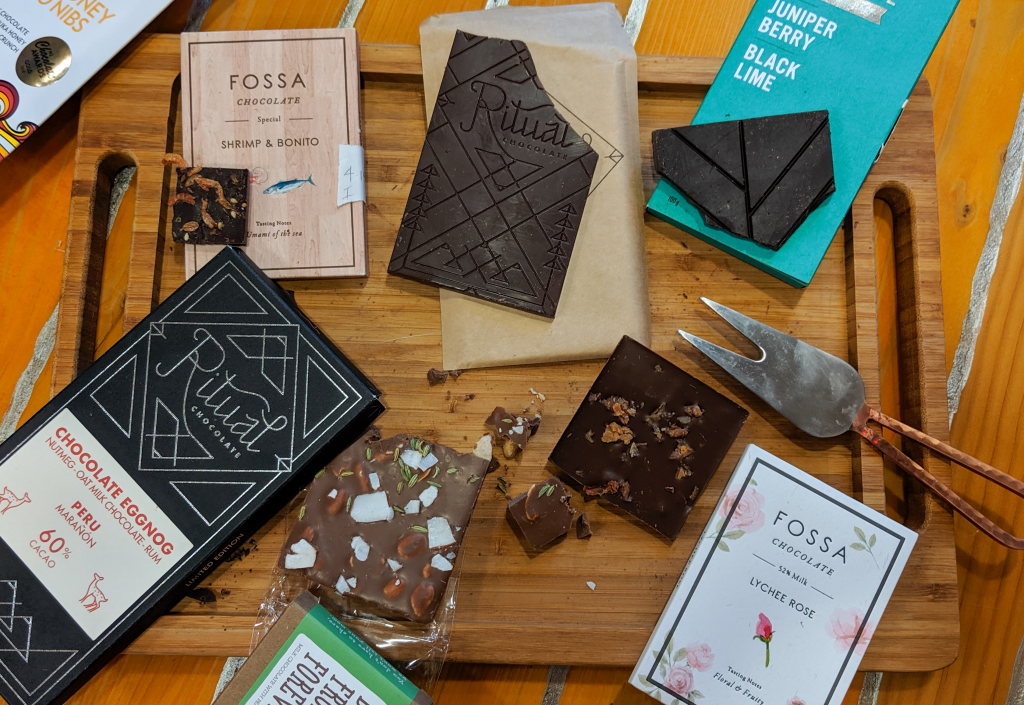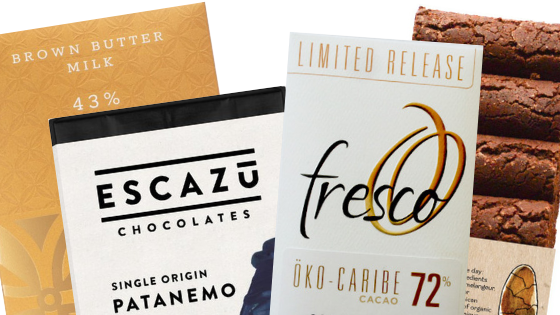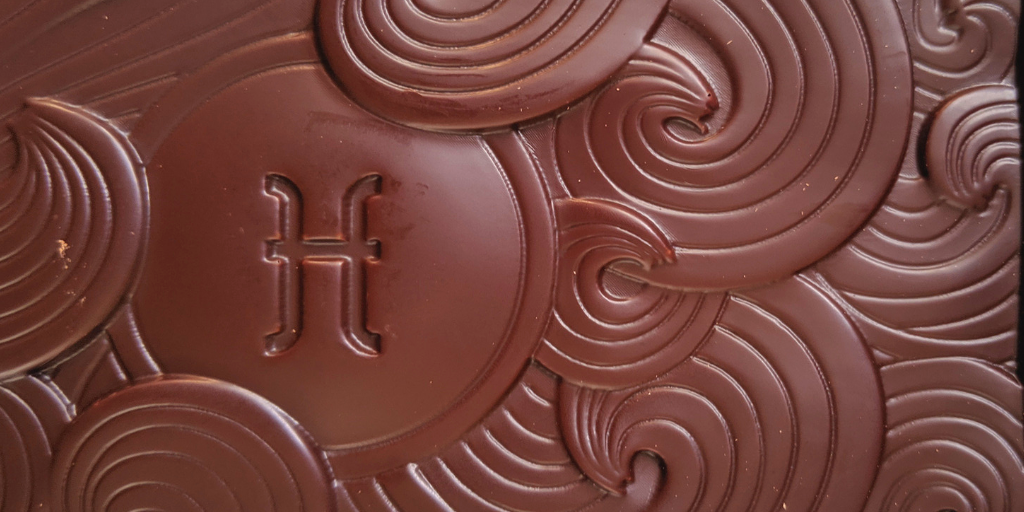Yes, you’ve been eating your whole life, it’s not rocket science. But here’s the thing: craft chocolate is meant to be savored. The makers are going in assuming you know how to taste, and the chocolate is made accordingly. (Hershey and other mainstream makers are very much not making that assumption, and it shows if you try tasting them with both styles.) Once you know the steps though, it’s like unlocking this whole new world of chocolate potential. And the best part is that it’s really easy to do, and gets easier with practice. (This post is long because I’m going into super fine details to give you a good foundation of habits. I rarely think this thoroughly for a tasting.)
So first, if you’d like a video on how to taste, here you go! If you’d like this info in even more detail, read on!
First: Set The Stage
To quote Barbie Van Horn of Finding Fine Chocolate, the awesome expert chocolate taster in the video with me, you can’t taste chocolate in a vacuum. But the fewer distractions you have, the better you can actually taste the chocolate. Here’s some stuff to consider:
- How loud is the space you’re in? Is it quiet, or are you at a loud party? If it’s really distracting, I’d try to find someplace quieter.
- How warm is the space you’re in? If it’s super hot the chocolate will melt, and if it’s super cold the cocoa butter won’t release as much flavor, and both are not as fun to boot. Ideally you want to be in a space around 70F / 21C, but really do your best here.
- What smells are in the air? Can you get away from any strong scents if possible? (You will taste some of those scents to some extent.)
- Are there any scents on you, like strong-smelling soap or perfume? It can even be worth rinsing your hands first if you use an especially strong smelling soap or lotion.
- Are you feeling reasonably healthy for you? You don’t need to be fit as a fiddle, but being on day three of a fever is going to leave you unable to smell and taste super great. (Doesn’t mean you can’t eat chocolate, just for tasting practice the flavors will be muted.)
- What kind of mood are you in? Not saying you need to be happy – and I hope the chocolate helps? – more if you’re in a super bad mood it’ll impact your focus, same to just being distracted in general.
- Have you eaten anything spicy or full of onions or garlic or other strong flavors in the last hour? If yes, give your body at least an hour if not longer before going on to chocolate, or the taste will be muted. (If you’re in a pinch, I usually rinse my mouth a bit with warm water, but it’s not the same as starting with a clearer palate.)
You don’t need to be as focused on perfection here, but even at the Chocolate Festival I like to try to find a quiet(er) corner to taste in whenever possible. Whatever you can manage really is fine.
Now, your tasting gear. At your side should ideally be two things (besides the chocolate): warm water, which will help you cleanse your palate between tastings, and something to take notes with. The note taking isn’t required, but when you’re starting out it can help focus your thoughts. Even just writing what you liked and didn’t like about a bar will help you when you go to buy your next bar.
Second: Tasting with all your senses

Chocolate is more than just ‘pop in mouth and chew.’ It’s more like tasting wine, a slowed down and savored process, and it’s absolutely worth the time to go through these steps. I like thinking of them by senses:
Sight and touch: How does the chocolate look and feel? Is it shiny, smooth, and glossy? Or is it matte or rough? (Shiny/glossy chocolate is in temper, where the chocolate crystallization is stabilized. This generally produces better tasting chocolate, though there are exceptions.) Do you see fat or sugar bloom, where the color is grey or you might see rings of white? (And if you do, please don’t eat it – make it into hot chocolate!) How do the inclusions, or stuff mixed into the chocolate, look if there are any?
Sound: Break the piece of chocolate between your fingers – a chocolate bar in temper will have a satisfying snap. A sampling piece can be about the size of your thumbnail, you want enough that you can taste it but not so much that it’s overwhelming to eat.
Now not all bars need to have this snap – brown butter bars and gianduja bars, for example, rarely do. But it can tell you if the bar will be smooth and creamy or rustic or soft.
Smell: Now that you’ve broken the chocolate, smell it. You don’t need to inhale forever, but just smell it, gently. Does it smell musty, earthy, fruity? Is the scent strong or weak? Does it remind you of anything?
If you aren’t getting much scent, gently rub the chocolate between your fingers to warm it and try again. I wouldn’t fight it for too long, but if you still can’t smell anything that’s also worth noting.
Taste: Now we taste!
Take that piece of chocolate and place it on your tongue. Your goal is to let it melt, and also to move it around in your mouth to cover as much of your palate as you can. Take your time, you don’t need to furiously scrub your mouth here.
Here’s what I like to think about as you taste:
- How does it taste at the beginning, middle, and end?
- How does it taste? Fruity, earthy, mushroomy? (If you’re stumped here, now’s the time to check on a chocolate flavor wheel or Eagranie Yuh’s flash cards.)
- Is it drying, kind of like how red wine or sour candies can dry out your mouth? That’s astringency. Is it too much for you, distracting, not a problem?
- Are the flavors bold, mild, overlapping? Does one flavor dominate?
- What’s the afternote like? Pleasant, bold, bland? Is it long and lingering or short and soft?
Take notes on as much (or as little) as you like.
What now?
Think about it! Talk about it if you’re with a friend! That’s one of my favorite things with tastings, even if a friend can’t be there in person I love comparing tastings later.
And if you’re tasting multiple chocolates, now’s the time to drink that warm water. (Or to eat more of the same chocolate, nothing wrong with a second taste.)

Some things to consider:
- If you’re tasting multiple chocolates, you should generally go from higher percentages (like 80%) to lower (like 50%) as you eat chocolate. Going the other way can mute/confuse flavors since the sugar (or really the lack thereof) will be more pronounced. (Doesn’t mean you can’t do it, just be ready to have a very, very different experience, and one that will likely be more bitter.)
- If you’re eating bars with stuff in them, or inclusions, I’d eat them after plain chocolate bars. The inclusions can really impact what you’re tasting, especially spicy ones.
- Try to stick to 4-5 bars in a tasting, especially when you’re starting. It’s going to be more chocolate than you might think.
- If you’re out or low on water, a trick you can do is to quickly eat a piece of the next bar, coating your palate as fast as you can. It will partially mask the flavor of the previous bar when you go to taste the next one. It’s not perfect, but it’s also better than nothing.
Still feeling like you could use some help? Here are some options:
- Take a chocolate tasting class! If you have a good chocolate shop near you, they’ll be able to answer all your questions and more! (And likely will give you samples to try out!) And more and more places nowadays offer online tastings, same to chocolate educators, so there’s likely an option out there that works for your schedule and needs!
Here’s more from Lauren Adler of the now-gone Chocolopolis talking with me about what you can get out of a good chocolate shop – along with a fast walk through on how to taste chocolate!
- Get the Chocolate Tasting Kit! I’m a huge fan of Eagranie Yuh’s step by step guide, and I still use her flash cards when I get stuck on a flavor. They’re super cheerful and super clear to use. (I did get sent a free copy, but seriously I’ve been using those cards for years.)
- Get the Chocolate Bar’s chocolate tasting series! I found it great for a cheap source of multiple chocolate bars to try at once, and it comes with info on how to taste chocolate, though short and sweet so you get tasting already. Here are my comments on the first set in the series:
Have any questions? Throw me a comment!


Pingback: Why does tasting chocolate ‘properly’ matter? – Dessert Geek!